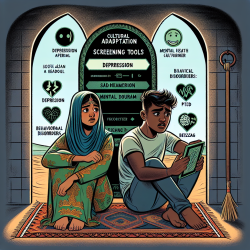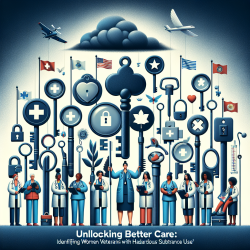Introduction
In the realm of public health, school-based programs have emerged as a powerful tool for increasing vaccination rates among adolescents. The recent study by M. B. Shin et al., titled "Multilevel perspectives on school-based opportunities to improve HPV vaccination among medically underserved adolescents: Beyond school entry mandates," sheds light on the untapped potential of schools and school-based health centers (SBHCs) in enhancing HPV vaccine uptake. This blog aims to distill the findings of this research, providing practitioners with actionable insights to improve their practice and encourage further exploration in this critical area.
Understanding the Research
The study conducted by Shin et al. focuses on the role of schools and SBHCs in increasing HPV vaccination rates among medically underserved adolescents in the United States. Despite the success of school-based vaccination programs globally, the U.S. has largely relied on school-entry mandates, which are only in place in a handful of states. The research highlights the need for alternative strategies, emphasizing the importance of schools as venues for health education and vaccine administration.
Key Findings and Recommendations
- School-Based Health Centers as a Safety Net: SBHCs are crucial in providing healthcare access to adolescents, especially those from marginalized communities. Practitioners should advocate for the expansion of SBHCs and leverage their presence to administer HPV vaccines efficiently.
- Parental Engagement and Education: The study found that parents are generally receptive to receiving HPV vaccine information from schools. Practitioners should focus on building trust and communication channels with parents through schools to enhance vaccine acceptance.
- Overcoming Vaccine Hesitancy: The politicization of vaccines poses a challenge. Practitioners can play a pivotal role in addressing misconceptions and promoting accurate information through school-based campaigns.
- Policy and Funding Advocacy: Limited funding for HPV vaccine administration in SBHCs is a barrier. Practitioners should engage in advocacy efforts to secure financial support and explore partnerships with community organizations to sustain vaccination programs.
- Data Interoperability: Ensuring seamless data exchange between SBHCs and state immunization registries is vital for tracking vaccination status. Practitioners should advocate for improved data systems to facilitate this process.
Call to Action
For practitioners, the insights from this study underscore the importance of a multi-faceted approach to improving HPV vaccination rates. By leveraging the unique position of schools and SBHCs, practitioners can address barriers to vaccine access and education, ultimately contributing to better health outcomes for medically underserved adolescents.
To read the original research paper, please follow this link: Multilevel perspectives on school-based opportunities to improve HPV vaccination among medically underserved adolescents: Beyond school entry mandates.










